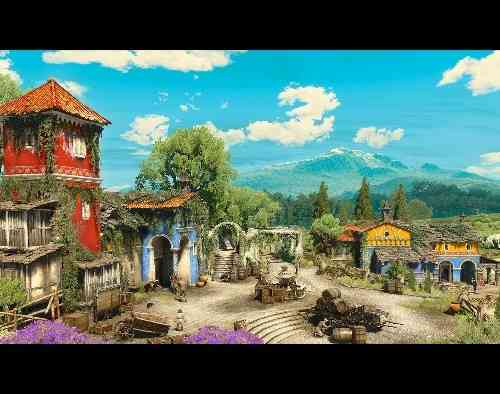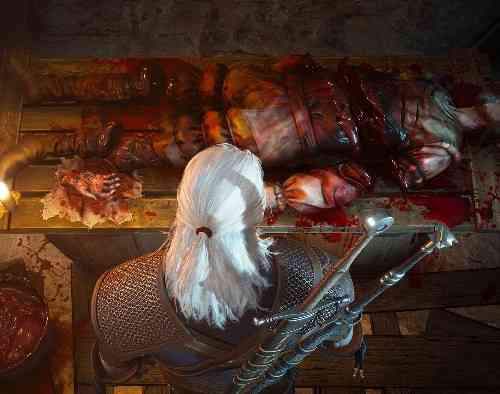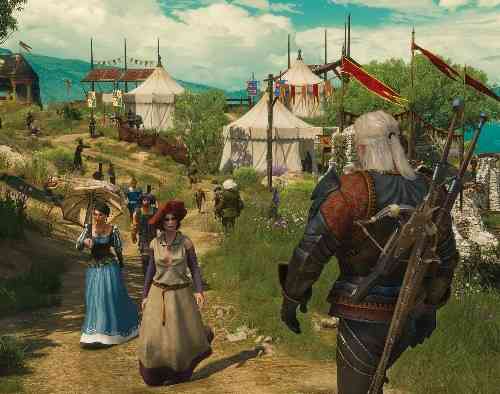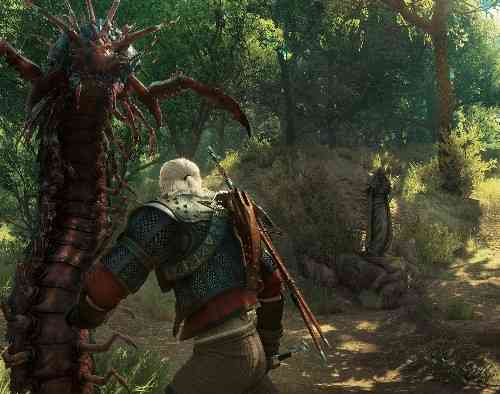The Witcher 3: Blood and Wine Review
In an odd turn of events, The Witcher 3: Blood and Wine has Geralt visiting the near pristine land of Toussaint. It’s more akin to something out of a fairy tale than the bleak landscapes of Novigrad and Skellige, but it is a welcome change since it helps remove the burden felt by the landscape. When the quests have an impact, you feel it much more thanks to this change in environment. Despite Toussaint’s cheery exterior, there are some dark secrets beneath this pastel exterior.
Almost right off the bat, Geralt is near overwhelmed with the sheer amount of boisterous chivalry apparent in the knights errant of Toussaint. They’re all honor, no nonsense, and are a treat to interact with compared to the hardened Nordic warriors of Skellige. Geralt even remarks more than once at the general silliness of how the knights behave, but it doesn’t detract from the experience in the slightest. Grand tournaments, feasts, and quests involving schemes, romance, and heavy choices are in no short supply in Blood and Wine, and the writing benefits from the separation of Geralt from the land. Novigrad and Velen are places that he is practically at home within, but the plush housing, cozy streets and rolling hills of Toussaint really help create a world that has our favourite Witcher feeling like he is actually on an adventure.
______________________________
“Grand tournaments, feasts, and quests involving schemes, romance, and heavy choices are in no short supply in Blood and Wine.”
And what an adventure it is. Over the pace of about 25-30 hours, Geralt is subject to a wide variety of quests, many with entertaining or surprising resolutions. Some of the story quests are dotted with multiple moral choices, and have stark outcomes, something the series has worked hard to achieve in the past. Take for example, a rather endearing quest involving a cursed being. One route ends up with a new patron at Geralt’s swanky vineyard, where the other simply has him killing the monster outright. Even when the quests have such a sudden conclusion, they’re still a treat to experience, and the writing of CD Projekt Red really shines in this case. The Witcher’s gotten better and better as the games go on, and it’s only fitting that Blood and Wine features some of the game’s best quests, including one rather hilarious mushroom-fueled hallucination filled with humorous barbs at people’s minor complaints at the game.
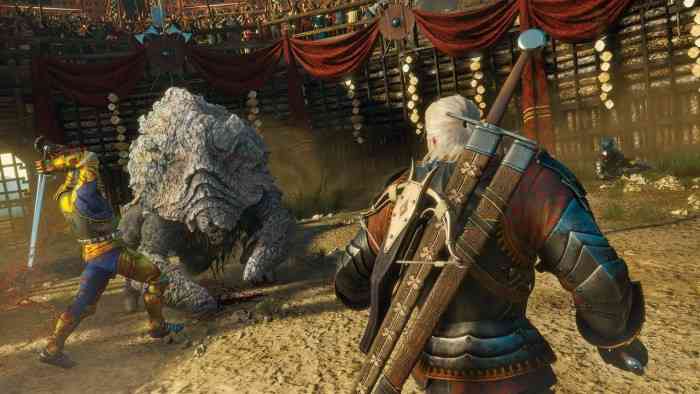
Sadly, the minor complaints do still pop up with Toussaint. As strong as Blood and Wine’s story is, the central antagonist starts off interesting enough, and as we learn about them at first, they are painted as a seemingly complex character, much like a lot of the supporting cast in the story. Sadly, this isn’t the case, and while they still serve as a competent villain, it just feels like lost potential. The strength of the other characters help offset this though, and Geralt interacts with a wide variety of characters that all have their own complexities, helping enhance the quality of the story overall. The gameplay’s gotten a fair bit of love over patches with the game, and with Blood and Wine, we get access to even more refinements that help immerse us in the world of Geralt.
______________________________
“Blood and Wine feels like a fitting end to Geralt’s story.”
Perhaps one of my favorite additions is the overall refinement of the menu system. The inventory screen is vastly overhauled, allowing for an excellent level of organization, and the refinements don’t stop there. As you find various books and notices, you can read them immediately, rather than sort through cluttered menus to track them down. It helps keep you involved in the quests, helping build immersion as you go along. There’s a ton of these items dotted around the landscape, and it really helps to keep things flowing. The combat has also gotten some love that helps turn Geralt into even more of a whirling dervish of sign-throwing, white haired death, if that were even possible. The addition of mutations adds an extra layer of depth, and it really opens up how the combat is approached. You can make enemies explode with critical hits, restore health upon a kill, or augment your signs further.

Between the wide range of minor refinements to the game, the stellar writing and story, and the whole location of Toussaint, Blood and Wine feels like a fitting end to Geralt’s story. There are a few ways the finale can play out, and with how differently they do, it’s worth at least reloading the save to see how it goes the other way. Only problem is, if you do that, you’ll likely get engrossed and put at least a few hours-worth of time in in the process. Blood and Wine is a massive expansion, and with content strong enough to stand on its own two feet, realising it’s merely an addition to what is otherwise considered one of the best games ever is just a cherry on top. Both this expansion and Hearts of Stone feel like their own unique games, but they are really just a drop in the overall massive experience that is The Witcher 3, and fans of the game will not be disappointed in the slightest.
*** PC code provided by the publisher ***
The Good
- Toussaint is gorgeous
- Writing is top notch
- A number of standout quests
- An immense amount of content
The Bad
- Villain is rather underwhelming
- Geralt’s last adventure
